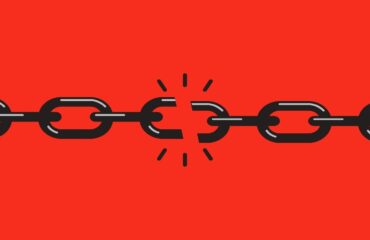The rapid advancement of artificial intelligence (AI) has transformed many aspects of software development, but there’s a clear reality: AI alone is not enough. The foundational pillars of requirement management and Unified Modeling Language (UML) must be present to harness AI’s full potential in software engineering. This guide explores how these key components work together in 2025, delivering optimal results for teams aiming to master AI-driven software development.
AI, Requirement Management, and UML: The Triad of Successful Development
As businesses race to implement AI solutions, a successful development process must include comprehensive requirement management & a clear system modeling using UML. AI-driven automation can boost productivity, but without the necessary structure and clarity provided by these methods, software projects risk inefficiency, misalignment, and failure.
Why Requirement Management is Essential?
Requirement management serves as the bedrock of any software development project. It ensures that all stakeholders have a clear understanding of the project’s objectives, helping to avoid scope creep and costly rework.
- Clarity of Purpose: Without precise requirements, AI-generated outputs may drift away from the actual business objectives, leading to misaligned products.
- Adaptability: In rapidly evolving industries, requirements can change. A structured management system allows AI tools to adapt to these changes and refactor software accordingly.
- AI’s Role: AI tools can assist in gathering, analyzing, and prioritizing requirements by identifying trends, patterns, and anomalies in vast amounts of data. However, human oversight is necessary to validate these insights.
UML: A Language AI Needs for Structured Development
UML (Unified Modeling Language) is pivotal for designing and visualizing software systems. It standardizes the development process, allowing teams to collaborate effectively and ensuring that AI-driven tasks fit seamlessly into the overall software architecture.
- Visualization of Complex Systems: UML diagrams like class diagrams, sequence diagrams, and use case diagrams offer a clear visualization of system components, which helps in understanding AI-generated code and aligning it with the architecture.
- Consistency in AI Implementations: As AI assists in generating or refactoring code, UML provides a standard framework to ensure that the changes are integrated consistently across the system.
- AI’s Enhancement of UML: AI can automate the generation of UML diagrams from natural language inputs or even code, saving time and increasing efficiency. This synergy improves the design and development process.
AI in Software Development: Enhancing, Not Replacing
AI offers many benefits in software development, including automation, optimization, and predictive insights. But its effectiveness depends on how well it’s integrated into a structured framework of requirement management and system design.
- Automated Code Generation and Refactoring
- What AI Does: AI tools can generate code based on predefined templates or requirements and suggest code improvements, speeding up the development process.
- Role of Requirements and UML: Requirements clarify what needs to be built, while UML ensures that generated code fits into the broader system design.
- Enhanced Debugging and Error Detection
- What AI Does: AI enhances debugging by continuously monitoring code and identifying potential errors or bugs.
- Role of Requirements and UML: Clear requirements help AI distinguish between intended and unintended behavior, and UML offers a reference point for determining if the code aligns with the architecture.
- Predictive Project Management
- What AI Does: AI predicts timelines, resource needs, and potential risks by analyzing historical project data.
- Role of Requirements and UML: Accurate requirements help AI make realistic predictions, and UML ensures that the project remains consistent with its architectural goals.
Key AI Development Platforms in 2025
The tools you choose for AI-enhanced software development can make or break your project. Below are the top platforms used in 2025, offering robust features and seamless integration with requirement management and UML.
- TensorFlow
- Key Features: Open-source, comprehensive machine learning libraries.
- Why It Works: TensorFlow’s flexibility makes it a good fit for projects that require continuous updates and tight integration with UML-based designs.
- IBM Watson
- Key Features: Advanced AI capabilities, great for business analytics.
- Why It Works: Watson excels at interpreting and acting on complex data, making it ideal for projects with intricate requirement specifications.
- Amazon SageMaker
- Key Features: Managed services for building, training, and deploying AI models.
- Why It Works: SageMaker simplifies the development process, ensuring that AI-generated outputs adhere to the predefined requirements and architectural designs.
- Microsoft Azure AI
- Key Features: Extensive cognitive APIs, analytics tools.
- Why It Works: Azure’s powerful integration tools work well for maintaining consistency between AI developments and UML models.
- OpenAI API
- Key Features: Natural language processing models like GPT-4.
- Why It Works: OpenAI API is perfect for generating human-like text or code, but requires precise requirement management to ensure outputs align with project goals.
AI’s Role in Key Development Areas
1. Automated Testing and Validation
AI-driven tools help automate test generation and code validation, but without clearly defined requirements and UML-based testing scenarios, testing efforts can become misaligned with the overall project goals.
2. Continuous Integration and Deployment (CI/CD)
AI can accelerate CI/CD pipelines by automating deployment processes. UML plays a critical role in documenting the deployment architecture, while requirement management ensures that the right features are deployed at the right time.
3. Enhanced Collaboration and Documentation
AI facilitates real-time collaboration by automatically generating documentation. However, this documentation must be based on clear requirements and aligned with the UML design, ensuring consistency and traceability across the project lifecycle.
4. Legacy System Modernization
AI helps modernize legacy systems by generating code that adheres to modern standards. However, requirement management and UML are necessary to ensure that the new code integrates seamlessly with existing systems and meets the required standards.
Challenges in Implementing AI in Software Development
While AI can automate and optimize many aspects of software development, its success depends on structured frameworks like requirement management and UML. Some of the challenges include:
- Complexity and Integration: AI-driven automation often requires complex integrations, which can only be managed effectively with precise requirement specifications and clear UML designs.
- Data Dependency: AI depends heavily on high-quality data for training and optimization. Requirement management helps ensure that the data used aligns with the project’s goals, while UML helps to document the data flow within the system.
- Skill Gaps: Teams may lack the expertise to effectively integrate AI tools with requirement management and UML, creating barriers to adoption. Continuous training and skill development are essential.
- Data Privacy and Security: With AI systems often requiring large datasets, ensuring the privacy and security of data is paramount. Requirement management helps define the data protection standards, and UML documents the security architecture.
The Future of AI in Software Development
AI is a transformative force in software development, but it cannot operate in isolation. The success of AI-enhanced development lies in the synergy between requirement management, UML, and AI. Together, these components create a robust framework that ensures the development process is efficient, adaptable, and aligned with business objectives.
At TTG Int. Ltd, we believe in the power of AI to revolutionize software development, but we also understand that AI is only as effective as the systems and processes that guide it. By combining AI with comprehensive requirement management and detailed UML designs, your team can unlock the full potential of AI-driven development in 2025 and beyond.




